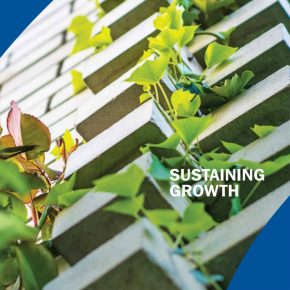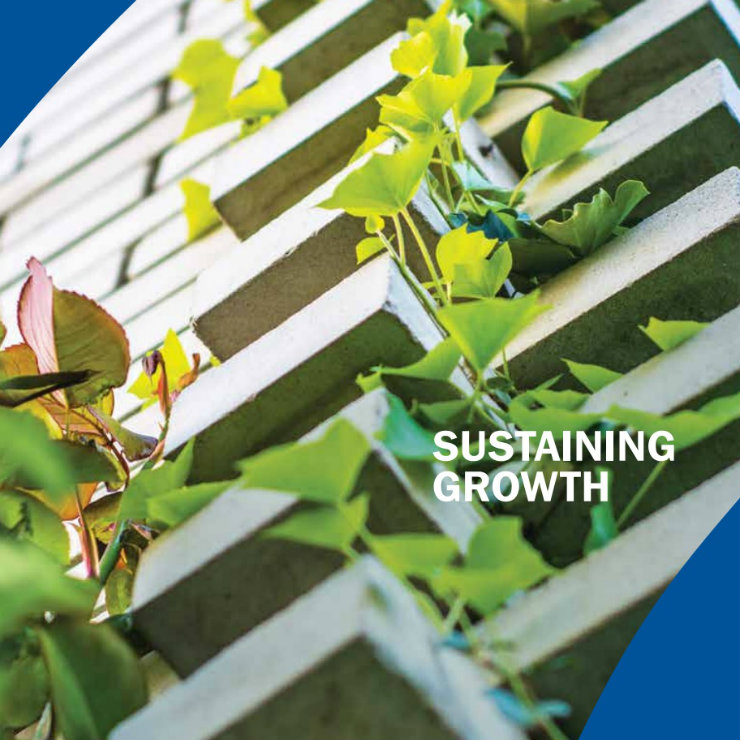
(EBRD, Public domain)
The EBRD’s analysts say that there is no magical level of GDP per capita, after reaching which a national economy automatically ceases to grow at a fast rate. They note, however, that in many countries with average income levels a slowdown of productivity growth can be observed.
There is another change taking place – the economic growth in the EBRD countries is no longer higher than in other developing markets (such a trend was observed from 1998 to 2008).
“Since 2009 the region has, on average, underperformed similar economies elsewhere in the world. While productivity growth drove the region’s growth prior to 2008, fixed capital accumulation has been the main contributor in recent years. However, in virtually every one of the EBRD’s countries of operations, investment has lagged far behind the levels seen in comparator economies. Indeed, the region’s capital stock is estimated to be 18 percent smaller than one would expect on the basis of its level of development,” wrote the analysts in a study entitled „Transition Report 2017-18”.
Infrastructure
Immediately after this diagnosis, they point to the first area of potential solutions – infrastructure. Around 40 per cent of that gap was accounted for by insufficient infrastructure, with the remaining 60 per cent corresponding to other forms of capital stock, such as machinery and equipment, buildings and intellectual property. That gap is equivalent to 18 per cent of the region’s total capital stock and 47 per cent of the region’s annual GDP. It turns out that insufficient infrastructure accounts for around 40 percent of this 18 per cent gap, with the remainder being accounted for by equipment, buildings and intellectual property. The total investment needs of the EBRD region are estimated at EUR1.9 trillion. Bridging this gap over a five-year period will involve expenditure totaling approximately 9 per cent of the region’s GDP in each of those five years.
Out of that total amount, 52 per cent are basic investments necessary to catch up with the developed countries, and 15 per cent are advanced investments in future GDP. The remaining 34 per cent are the costs of maintaining and replacing obsolete infrastructure.
Over this period Poland needs investment worth approx. EUR100bn, but only 1 per cent are basic investments aimed at catching up with developed countries.
“Since 2005 infrastructure has improved significantly in many countries (…) Using micro scale data, in the report we show how reduced transport time-thanks to a new road network-affected trade between the provinces in Turkey. In the provinces which benefited the most on the new roads, trade with the rest of the country increased by 20 per cent,” said Mateusz Szczurek, Lead Regional Economist at the EBRD for Central Europe and the Baltic States, during the presentation of the report.
Ecology
The second area of growth indicated by EBRD is the so-called green growth. Greenhouse gas emissions in EBRD countries are 20 per cent higher per USD1 of GDP than in comparable countries.
“Putting economies on the path to green growth will require strong policies and strict implementation, starting with the elimination of energy subsidies and the introduction of reasonable carbon pricing. It will also require a strengthening of the institutional and regulatory frameworks for renewable energy,” write analysts.
“When electricity and fuel are subsidized, well-managed firms choose more energy intensive production structures, resulting in higher emissions. In contrast, when energy is appropriately priced, well-managed firms respond to price signals and reduce their emissions,” this is how the EBRD economists explain the mechanism.
Poland’s results aren’t very good. Its economy is more than two times less energy efficient than the EU average. The share of renewable energy in the national energy mix is only 11.4 per cent, meaning that it is below the Polish national target of 15 per cent. As many as 33 out of 50 cities in Europe with the most polluted air are located in Poland, which contributes to 40,000 premature deaths annually.
Enterprise development
The third area where countries should look for sources of growth is the development of private enterprises. The EBRD highlights two figures in this regard. First, as much as 81 per cent of enterprises in Central and Southeast Europe (CSE) employ fewer than 10 employees. Secondly, the number of patents per 10,000 people in EBRD’s countries of operations is only 4 (while in South Korea it is as high as 213). The EBRD economists suggest a causal relationship between both figures: small businesses are less innovative.
“Creating a business environment that hastens the exit of less productive firms and fosters the growth of more productive ones is essential in order to speed up the reallocation process [of employees]. This may require some rethinking of bankruptcy laws and competition legislation. More generally, transparent tax systems and improvements to the rule of law can help productive firms to increase the scale of their operations without fear of expropriation,” EBRD writes in its report.
Poland’s evaluation in this area is not straightforward. On the one hand, the EBRD emphasizes, that the share of enterprises controlled by the state in the national GDP has decreased from 70 per cent at the end of the 1980s to about 15 per cent nowadays.
On the other hand, the state controls at least one company in 39 of the 43 sectors examined by the OECD, either through majority shareholding or through other means, such as special voting rights. Despite this, Poland does not have a flagship export industry, such as the automotive in the Czech Republic.
Poland exports some automotive and airplane components, has shipyards and sells food. Advanced technologies only have a 8.5 per cent share in Polish exports. This is well below the EU average, which is 17 per cent, but also below results achieved by Czech Republic, Slovakia and Hungary.
Meanwhile, Poland is experiencing growth in the business services sector, which already employs almost 160,000 people in 470 service centers.
The full report can be found here.


